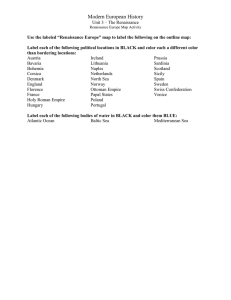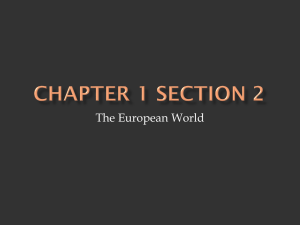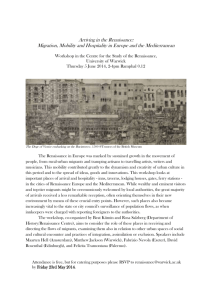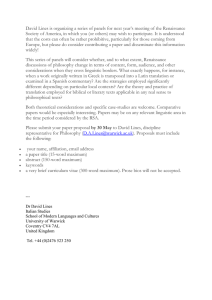THE RENAISSANCE CULTURAL CROSSROADS: TRANSLATION, PRINT AND CULTURE IN BRITAIN 1473-1640
advertisement
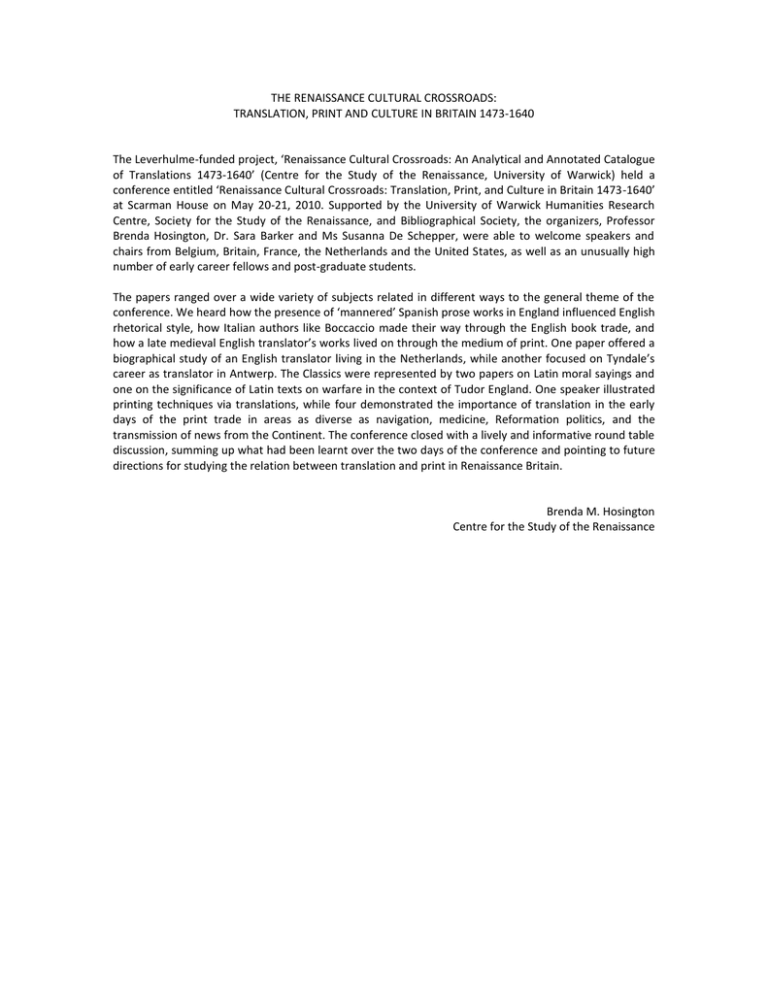
THE RENAISSANCE CULTURAL CROSSROADS: TRANSLATION, PRINT AND CULTURE IN BRITAIN 1473-1640 The Leverhulme-funded project, ‘Renaissance Cultural Crossroads: An Analytical and Annotated Catalogue of Translations 1473-1640’ (Centre for the Study of the Renaissance, University of Warwick) held a conference entitled ‘Renaissance Cultural Crossroads: Translation, Print, and Culture in Britain 1473-1640’ at Scarman House on May 20-21, 2010. Supported by the University of Warwick Humanities Research Centre, Society for the Study of the Renaissance, and Bibliographical Society, the organizers, Professor Brenda Hosington, Dr. Sara Barker and Ms Susanna De Schepper, were able to welcome speakers and chairs from Belgium, Britain, France, the Netherlands and the United States, as well as an unusually high number of early career fellows and post-graduate students. The papers ranged over a wide variety of subjects related in different ways to the general theme of the conference. We heard how the presence of ‘mannered’ Spanish prose works in England influenced English rhetorical style, how Italian authors like Boccaccio made their way through the English book trade, and how a late medieval English translator’s works lived on through the medium of print. One paper offered a biographical study of an English translator living in the Netherlands, while another focused on Tyndale’s career as translator in Antwerp. The Classics were represented by two papers on Latin moral sayings and one on the significance of Latin texts on warfare in the context of Tudor England. One speaker illustrated printing techniques via translations, while four demonstrated the importance of translation in the early days of the print trade in areas as diverse as navigation, medicine, Reformation politics, and the transmission of news from the Continent. The conference closed with a lively and informative round table discussion, summing up what had been learnt over the two days of the conference and pointing to future directions for studying the relation between translation and print in Renaissance Britain. Brenda M. Hosington Centre for the Study of the Renaissance
